By Kate Cebik
Development Assistant
Last week, Common Ground graduated its class of 2015. Jose Alfaro spoke at commencement, delivering a powerful speech that included these words:
Ask yourself what problems you want to fix in the world, and make solving them a part of your life too.
This idea really resonated with me—what a brilliant approach to the world.
Common Ground’s seniors have practice with this already. They’ve taken on green jobs, conducted original research on water quality, raised their voices before the EPA and on the New Haven Green, and more. They’ve all successfully defended portfolios showing their growth as community leaders.
And, for their final semester, Common Ground seniors were presented with this challenge: Develop a culminating group project that builds on what you’ve learned while at Common Ground and addresses an issue facing your community.
The class of 2015 tackled the following issues:
- Urban Youth and the Natural Environment
- Women in Media-Effects on Childhood & Adolescent Development
- The Benefits of Animals
- Sense of Belonging
- Awareness of the American Food System
- Youth Violence
Seniors presented these projects earlier this month. Below, I try to do justice to all that these powerful problem-solvers accomplished.
Urban Youth and the Natural Environment
The Students: Marcel Aguirre, Nate Wilson, Grace Knudsen, Janet Sakouvogui, Jesus Reyes, Jon Deynes
The Essential Questions: How can urban youth experience educational advantages and benefits through involvement with nature? How do financial and geographic restrictions on urban youth in the natural world affect their future?
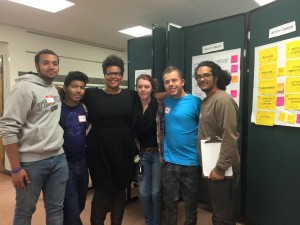
Seniors meet with Akiima Price, a national leader on engaging low income communities of color in environmental education.
The Problem: The youth & environment group explored and addressed disproportionate access to nature among people living in cities, people of color, and low-income communities—and made a connection between lack of access to nature and under representation of these groups in environmental fields.
The Response: Students joined in a major symposium on nature and cities at Yale, and connected there with some of the nation’s leading advocates and researchers in this field (e.g., Rue Mapp, founder of Outdoor Afro). They consulted with Akiima Price during her residency at Common Ground. Members of this group also served on the advisory committee of the New Haven Urban Refuge Initiative and the new proposed youth center on Goffe Street. They focused their community action project on the churchyard that abuts this new youth center, using a grant from the Connecticut State Department of Education to create a garden and “urban oasis” on this site.
Women in Media — Effects on Childhood & Adolescent Development
The Students: Reilly Stevens, Yasmine Scipio, Ashley Holmes-Clark, Meisha Hennessy, Aridyan Perez, Aaliyah Barrett
The Essential Questions: How can we change societal institutions that uphold sexist values? What is 21st century feminism?
The Problem: Students examined inter-partner violence, objectification, sexualization and hypersexualization in classic and contemporary advertising, literature, and films. They presented early and current faces of feminism, from Gloria Steinem to Sonia Sotomayor. They asked us, the audience, to consider examples of how women are depicted in media.
The Response: Students designed a curriculum for four workshops focused on representation, language, audience, and production. They led these workshops at Common Ground, educating and empowering young women in our community. These workshops are designed to be recreated to encourage future students to develop a critical eye for media portrayals of women and girls.
In addition, they created the short video below with interviews and images to illustrate the negative impact, and pervasive nature, of hypersexualized media portrayals of women and girls.
The Benefits of Animals
The Students: Brandon Crandall, Francesca Ruiz, Frankie Negron, Freddie McGirt, Giana Vargas, Stephanie Torres
Essential Questions: How do animals benefit human lives? How can animal and human relationships be therapeutic?
The Problem: This group researched animal abuse, feral animal populations, and shelter populations nationally and in Connecticut. They explored creative alternatives such as assistive animal therapy (AAT) and animal prison programs. The group worked with Chris Patella, Founder & Director of Animal Assisted Therapy Services, Inc. and Kathy Shea, Owner of Paws ‘N Effect Canine Training Center, to understand how these alternatives work in practice.
The Response: The group presented to fifth graders at Truman School in New Haven as well as to high school students at Common Ground High School. Their presentation raised awareness about animal cruelty and the benefits of assisted animal therapy. They hope to create an annual workshop in conjunction with Paws ‘N Effect.
Sense of Belonging
The Students: Angel Kennedy, Damien Cruz, Elmer Galvez, Meghan Brooks, Omar Mercardo, Zak Kenyon
The Essential Questions: How do we create a sense of community? How can youth take control of their community?
The Problem: These students focused on the “wellness triangle,” a model of healthy physical, social, and emotional/mental components that come together to create a sense of belonging and well-being. Students researched the benefits of wellness in these categories, determined key components of successful support programs, and shared personal examples from their lives of ways they found these aspects at Common Ground.
The Response: Students surveyed the Common Ground High School community, asking students what “a sense of belonging” means to them, in their own words. They also asked if students felt they belonged in this community, as well as about student experiences with a range of issues including depression, anxiety, eating problems, physical fights, and diagnosed mental or neurological disorders. They outlined key components to successful programs that support the wellness triangle, and hope these findings will be used to continue to improve Common Ground’s supports for students.
Awareness of the American Food System
The Students: Maygan Brooks, Adrian Gonzalez, Michael Kelsey, Sabrina Torres
The Essential Question: At what point will Americans become aware of the various ways their food impacts their health and their world?
The Problem: This interest in this topic sprang out of the work several of the students did on industrial agriculture in their Food and the Environment course taught by Mr. Stone here at Common Ground. Drawing from the lessons learned in Food & the Environment, research from Wholesome Wave in Bridgeport and Data Haven in New Haven, The New Haven Food Policy Council Action Plan, and interviews with Jesse Delia and Tiffany Torres of Common Ground, the students created a three pronged action plan for addressing gaps in food source education.
The Response: The students took on the following approach:
- Raise awareness of healthy and local food sources: Students flyered the Edgewood neighborhood to promote the double value SNAP benefits program at New Haven farmers markets.
- Teach people how to cook using organic produce: Sabrina Torres ran a Salsa-making demo from ingredients available at the farmer’s market.
- Instill healthy eating habits in children: Adrian Gonzalez ran a workshop for children where they colored in vegetables and identified food you should eat everyday and food you should rarely eat.
Youth Violence
The Students: Moshema Hull, Lovell Davis, Malik Joyner, Quentin Barnes, Jaquell McCray, Shantel Ratchford, Lorenzo Giordano
The Essential Questions: How is education for people living in poverty connected with youth violence in America? How do educational and enrichment programs lead to healthy outcomes for youth in urban areas?
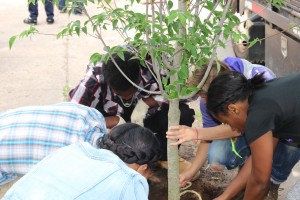
Students join with the Urban Resources Initiative and family members to plant a tree in memory of Jericho Scott.
The Problem: These students researched the staggering statics surrounding violence for youth, nationally and locally. They examined the relationship between violence and available programming. The youth violence group used community greening and improvement as a strategy for addressing youth violence.
The Response: Their community-based work included:
- planting a tree in honor of Jericho Scott, a young man who was shot and killed this winter, in partnership with Jericho’s family and the New Haven Urban Resources Initiative
- Leading a street cleanup in Fair Haven, the neighborhood where this shooting happened
- Stewarding the tree that seniors planted for Javier Martinez this year
It gives me hope that, as young people, our seniors are ready and willing to step forward to solve community problems. Students identified and tackled issues that reflect their shared passions. Many of these passions are rooted in experiences much earlier in the their time at Common Ground – from courses, to community volunteer opportunities, to jobs, to research papers from their senior writing class. As this most recent class of Common Ground graduates moves off into the world, I look forward to hearing about how they continue to step forward as problem-solvers and change-makers – growing into the leaders we know they can become. What is the next problem to be tackled for New Haven and beyond?

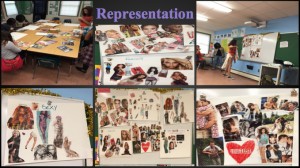
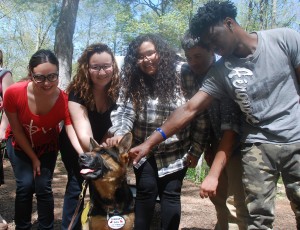
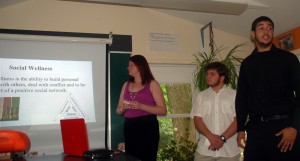
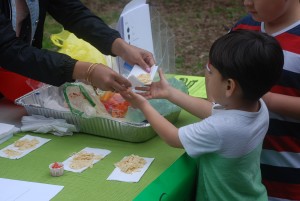
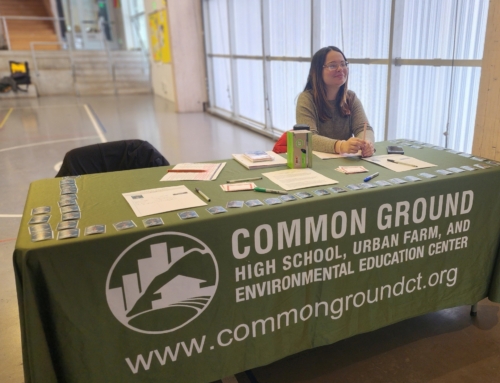
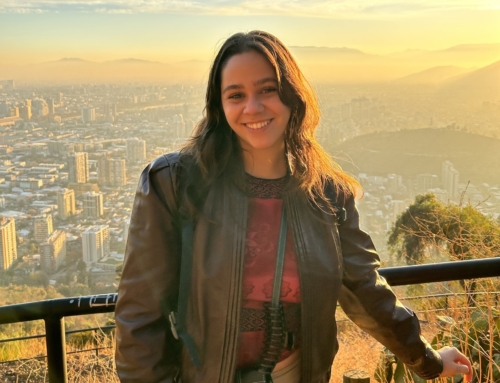
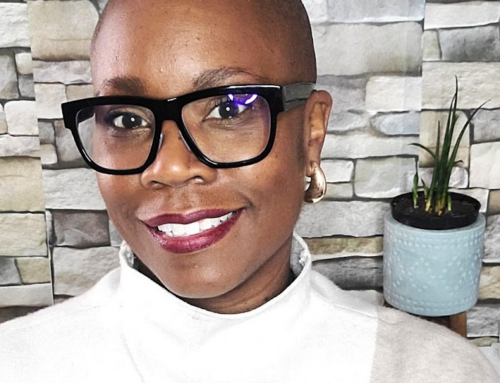
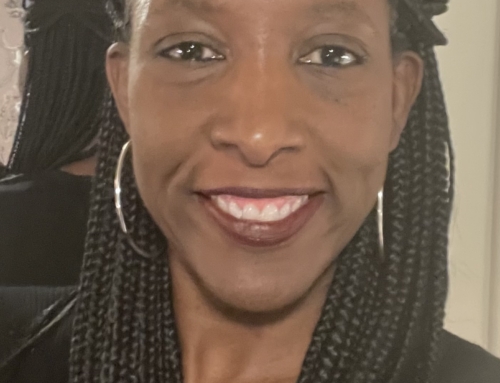
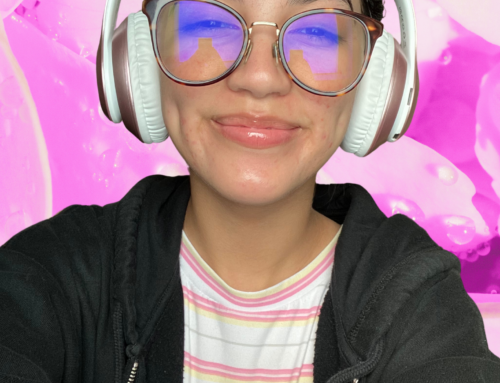
Leave A Comment